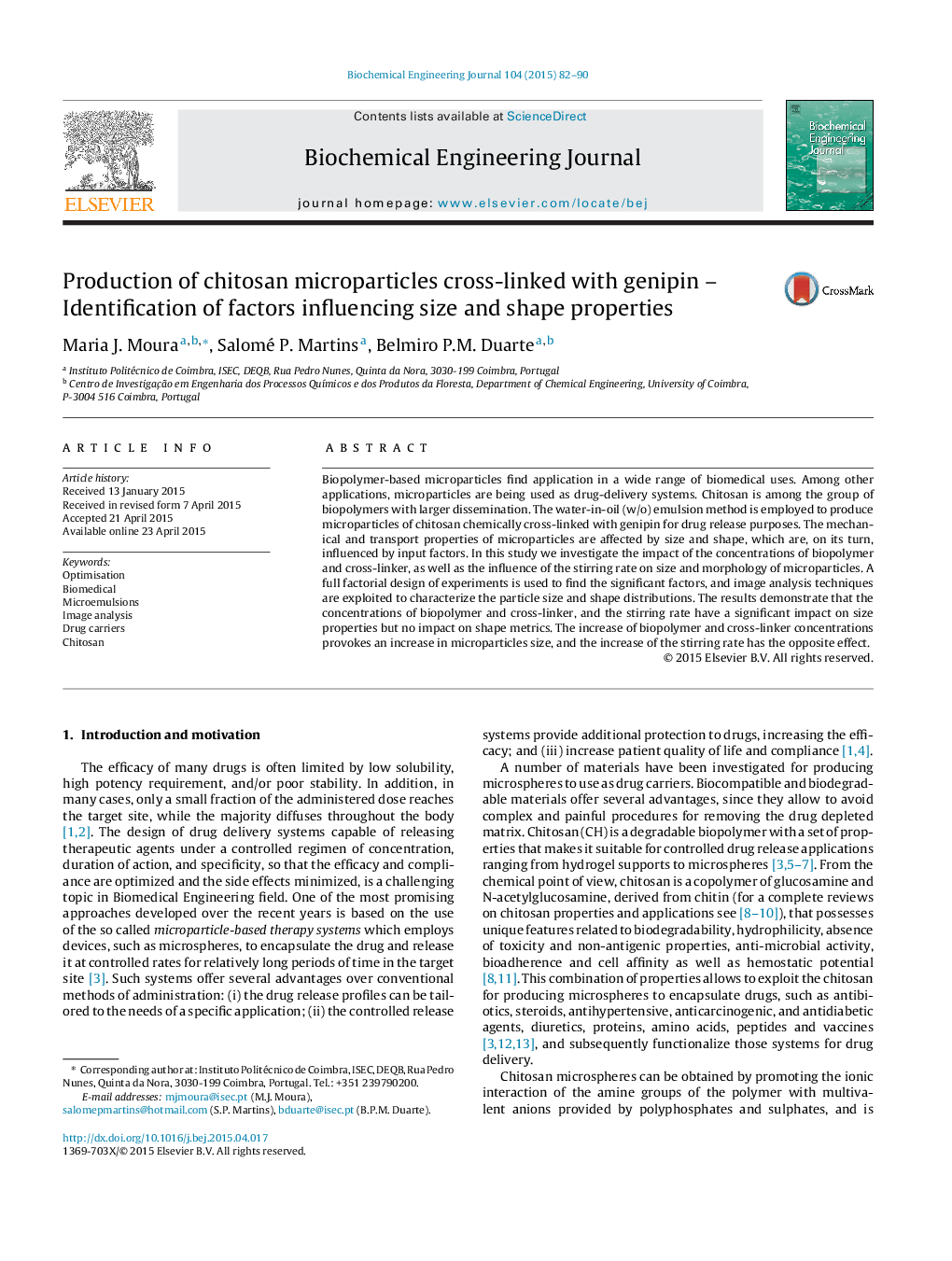| Article ID | Journal | Published Year | Pages | File Type |
|---|---|---|---|---|
| 2792 | Biochemical Engineering Journal | 2015 | 9 Pages |
•Water in oil emulsion method is used for producing genipin cross-linked chitosan microparticles.•The size of microparticles increases as the polymer concentration increases.•The size of microparticles increases as the cross-linker to polymer mass ratio increases.•The size of microparticles increases as the stirring speed decreases.•No impact is observed on shape metrics.
Biopolymer-based microparticles find application in a wide range of biomedical uses. Among other applications, microparticles are being used as drug-delivery systems. Chitosan is among the group of biopolymers with larger dissemination. The water-in-oil (w/o) emulsion method is employed to produce microparticles of chitosan chemically cross-linked with genipin for drug release purposes. The mechanical and transport properties of microparticles are affected by size and shape, which are, on its turn, influenced by input factors. In this study we investigate the impact of the concentrations of biopolymer and cross-linker, as well as the influence of the stirring rate on size and morphology of microparticles. A full factorial design of experiments is used to find the significant factors, and image analysis techniques are exploited to characterize the particle size and shape distributions. The results demonstrate that the concentrations of biopolymer and cross-linker, and the stirring rate have a significant impact on size properties but no impact on shape metrics. The increase of biopolymer and cross-linker concentrations provokes an increase in microparticles size, and the increase of the stirring rate has the opposite effect.
